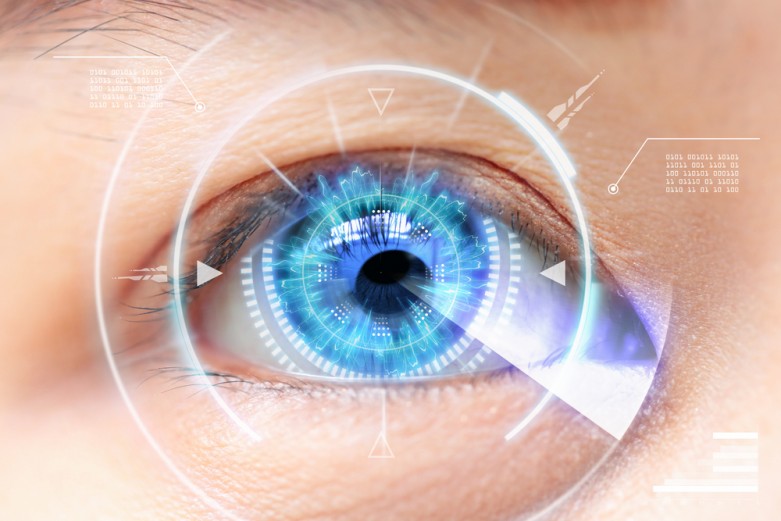

The American Academy of Ophthalmology has established May as “Healthy Vision Month”. During this time, the AAO spreads the word about the value of proactive eye care – visiting eye doctors regularly, even if you think your eyes are healthy.
Often, people who have good vision and don’t need corrective lenses fail to visit the eye doctor regularly. Despite the fact that everyone should see an eye doctor at least every 1-2 years, hundreds of thousands of Americans assume that their eyes are healthy – and fail to do so.
This can be a huge problem. Just like everything else in medicine, an ounce of prevention is worth a pound of cure – and catching a serious eye disease in its early stages is critical to ensuring that it can be resolved easily.
So, to help promote the benefits of regular visits to the eye doctor, we’ve put together a list of the top 5 most common eye diseases! Recognizing the early signs of these vision issues is critical to maintaining healthy eyes, so read on!
1 . Refractive Errors – 195 Million Americans
It may seem silly to put this on our list, but all refractive errors are technically, a disease.
If you need glasses, you have some kind of refractive error like myopia, hyperopia, astigmatism, or presbyopia – and you’re one of the 61% of Americans who has to wear prescription eyeglasses or contacts in order to see correctly!
If you do wear contacts or glasses, it’s critical that you see your eye doctor regularly, so that the progression of your refractive error can be tracked, and you can receive new, updated corrective lenses.
Failing to get your prescription updated can cause you to suffer decreased clarity of vision, dizziness, and even headaches! So visit your eye doctor – and make sure you’re seeing clearly!
Cataracts affect 24.4 million Americans, most of whom are over 40. A cataract is caused by the “clouding” of the eye’s normally clear lens. This results in decreased visual acuity – and in time, complete blindness.
In fact, cataracts are the leading cause of blindness worldwide. Though the exact cause of cataracts is unknown, common risk factors include ultraviolet exposure, excessive alcohol consumption, poor diet, and diabetes.
Though cataracts can’t be cured, they can be dealt with through surgery. Treatment of a cataract requires the removal of the clouded lens of the eye, and the replacement with a clear artificial intraocular lens, or IOL.
Diabetic retinopathy is the leading cause of blindness in diabetic Americans, and around 33% of all diabetics in America suffer from some form of diabetic retinopathy.
This disease is caused by high blood glucose levels building up in the delicate blood vessels of the retina. In early stages of the disease, this leads to fluid and swelling behind the eye.
In later stages of diabetic retinopathy, scar tissue buildup and swollen blood vessels can cause the retina to detach, causing permanent, irreversible blindness.
However, diabetic retinopathy can be mitigated if it’s caught early. Because of this, all diabetic Americans should have their eyes checked regularly – at least once a year – to ensure that they are not at risk and that their eyes are in good health.
Glaucoma is caused by the “aqueous humor” of the eye building to a dangerous pressure. Normally, this plasma-like substance is used to support the structure of the eye.
But when excess aqueous humor builds up in the eye, pressure can be placed on the optic nerve – potentially damaging or destroying it.
Often, it’s impossible to notice glaucoma until “blind spots” start to form in your vision – and by then, the damage is very severe. While glaucoma can be treated with pills and medicated eyedrops this nerve damage cannot be reversed.
This is why regular eye exams for glaucoma are critical, especially in middle-aged and older individuals. If glaucoma is caught before it progresses, most patients manage to make a full recovery.
The “macula” is the part of the retina that allows you to focus on fine details. Macular degeneration occurs when this part of the retina degrades – usually due to age.
Macular degeneration can present as hazy or blurred vision – but if left untreated, it can lead to total loss of vision. And while macular degeneration is not reversible, it can often be slowed with proper treatment – so older Americans, in particular, should get checked yearly by a qualified eye doctor.
There are also are quite a few lifestyle choices related to macular degeneration. Poor diet, lack of exercise, excessive alcohol use, and smoking have been associated with a much higher risk of age-related macular degeneration.
Keep Your Eyes Healthy – See Your Eye Doctor!
Do you see a theme here? Most of these diseases can be prevented or mitigated with early detection – and early detection is only possible when you schedule regular checkups with your eye doctor.
So don’t let your busy nursing schedule take precedence over your health. Schedule an appointment with your eye doctor today, and ensure that your vision is healthy!
When we discuss students, we always mention their qualities. Those qualities show what they are…
If you or someone you know is juggling mental health issues alongside substance abuse, understanding…
For the last couple of weeks, the Israel-Hamas conflict has taken over the news cycle.…
Our eyes are invaluable, serving as our windows to the world. The ability to see…
Undoubtedly, one of the most demanding and challenging professions is nursing. Nurses work long hours in…
Echocardiography, or echo for short, is a key diagnostic test used by cardiologists to assess…